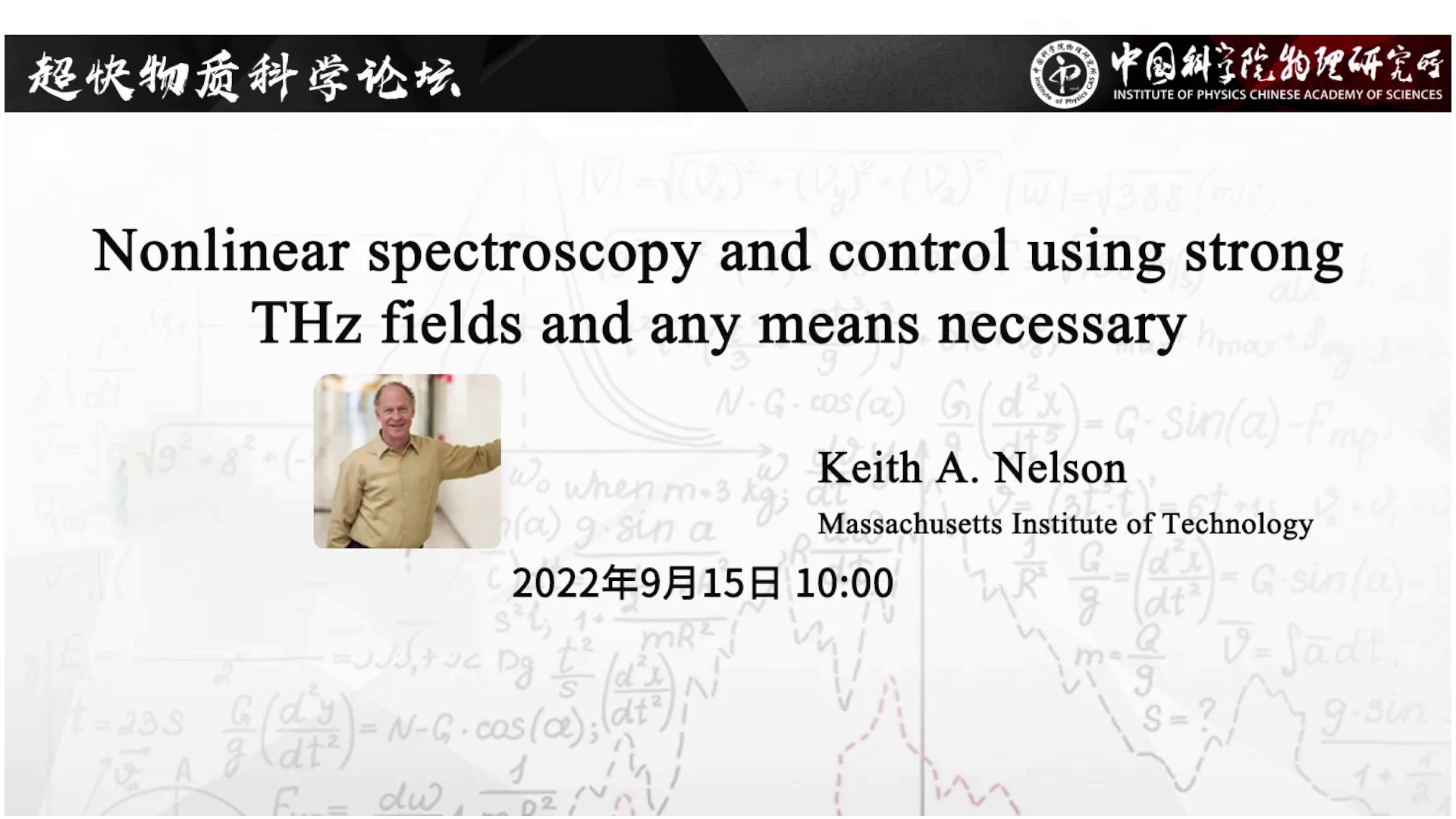Keith A. Nelson | Nonlinear spectroscopy and control using strong THz fields and any means necessary

详情信息
- 报告题目: Nonlinear spectroscopy and control using strong THz fields and any means necessary
- 报告人: Keith A. Nelson,Massachusetts Institute of Technology
- 报告时间: 2022年9月15日 (周四) ,10:00
- ZOOM会议: 836 5004 7211(线上)
报告摘要:
Terahertz fields are now available with sufficient strengths to drive nonlinear responses in a wide range of materials. THz field interactions with lattice, electronic, and spin degrees of freedom and monitoring of THz-induced responses with THz, optical, and x-ray probes will be illustrated, with emphasis on THz-driven structural and electronic quantum phase transitions. Single-shot measurement of time-dependent signals will be highlighted for enabling study of irreversible phase transitions that do not permit repeated excitation of the initial, pristine state and for enabling 2-dimensional THz spectroscopy with data collection times measured in minutes or hours instead of days.
Optical excitation of acoustic and shock waves in a geometry that permits continuous viewing of wave propagation and its effects on materials will also be discussed briefly. It is now possible to excite acoustic waves up to 1-2% strain without damage to the optically irradiated region, permitting repeated excitation and time-resolved measurement as well as observation of cumulative effects. Current efforts to combine acoustic, THz, and optical excitation for multimodal control will be discussed. Above-damage-threshold excitation of shocks reaching pressures of tens of GPa, with prospects for much higher pressures, will also be demonstrated.
报告人简介:
Professor Keith A. Nelson obtained his PhD in Physical Chemistry from Stanford University in 1981, and, after a postdoctoral year in UCLA, joined the MIT department of chemistry as a faculty member in 1982. He is currently the Haslam and Dewey Professor of Chemistry at MIT. Prof. Nelson’s research interests are in ultrafast optics, coherent spectroscopy, and coherent control over collective dynamics and structure in condensed matter. In recognition of his seminal contribution to these fields, he was awarded in 2017 the Frank Isakson Prize by the American Physical Society, and in 2021 the William F. Meggers Award by the Optical Society of America.


